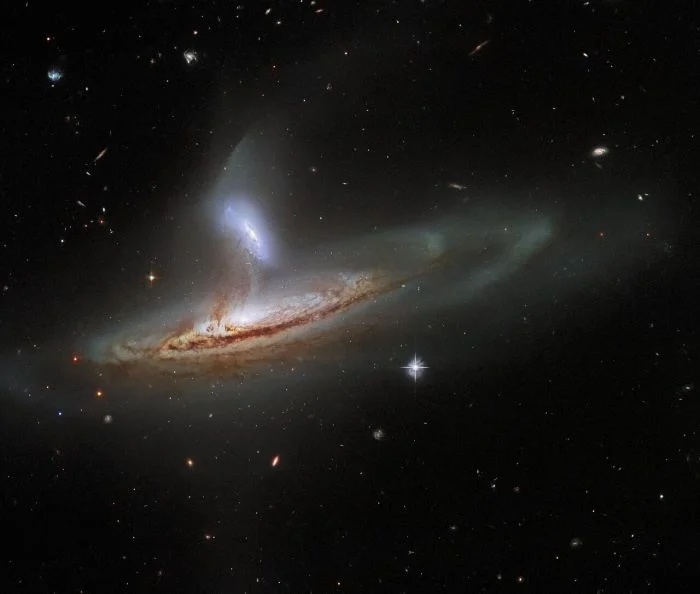Scientists are observing the merger of galaxies NGC 169 and IC 1559 using the Hubble telescope. Both galaxies have large amounts of gas and dust. The process of their collision is quite violent.

Hubble photographed galaxy merger
The Hubble Space Telescope images allowed scientists to get a closer look at the process of merging two galaxies located at a distance of 320 million light-years from us. These star systems resemble the Milky Way, but differ in size from it. The diameter of NGC 169 is about 140 thousand light-years. IC 1559 — 40 thousand light years.
Both galaxies have active nuclei. This means that matter falls intensively on supermassive black holes and at the same time turns into the energy of radio waves. This is not surprising, given that the gravitational interaction has already shifted gas, dust and even stars, and they began to move in different directions, forming streams connecting star systems.
After some time, the structure of both galaxies will completely collapse. There will be chaos, from which one, even larger galaxy will gradually form. Supermassive black holes will merge into one, producing a burst of gravitational waves. But all this will happen over the next hundreds of millions, or even billions of years.
Death of galaxies and Birth of stars
The merging of galaxies or their collision is a fairly common process in the Universe. Scientists suspect that this is how the “star islands” increase their size. Our Galaxy and its neighbor M31 will soon face the same. However, “soon” is by cosmic standards. The processes of merging galaxies are incredibly slow compared to human life or even the existence of the entire civilization on Earth. Therefore, each concrete merger seems to us motionless.
But it is important to find out how catastrophic the consequences of the merger of galaxies can be. For example, the same activity of nuclei means an increase in the radiation background in a significant part of the entire fusion region. And this radiation can become disastrous for life on planets.
On the other hand, the images of NGC 169 and IC 1559 demonstrate that not only destruction occurs in galaxies. They also show numerous new regions of star formation that have arisen as a result of the collision of gas flows and their “heating” by radiation from black holes.
According to www.sciencealert.com< /a>
Follow us on Twitter to get the most interesting space news in time
https://twitter.com/ust_magazine
